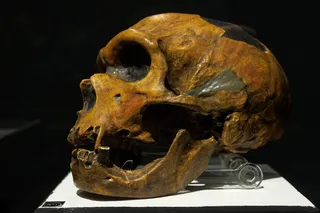Hair whorls in the dog (Canis familiaris). I. distribution. "Hair whorl characteristics were assessed in the domestic dog (Canis familiaris) in the regions of cephalic, cervical (dorsal, ventral, and lateral), thoracic and brachial axillary regions, the chest, shoulders, elbows, ventral abdominal region, and on the caudal thighs (ischiatic). They were classified as simple or tufted, and their position was recorded as the distance between their centers and bony landmarks within each region. The distribution of whorls was explored in a cohort of domestic dogs (N = 120) comprising a variety of breeds and cross-breeds, sourced from shelters (N = 60) and the general public (N = 60). Whorls observed in the majority of dogs in this cohort typically occurred on the chest, brachial axillary region, elbows, and ischiatic region. Atypical whorls were present in fewer than 20% of the population, and included those on the head (cephalic), cervical regions (dorsal, ...
NCBI ROFL: Double feature: are your dog's cowlicks normal?
Explore the fascinating characteristics of hair whorls in dogs, including their distribution and relation to coat length.
More on Discover
Stay Curious
SubscribeTo The Magazine
Save up to 40% off the cover price when you subscribe to Discover magazine.
Subscribe












